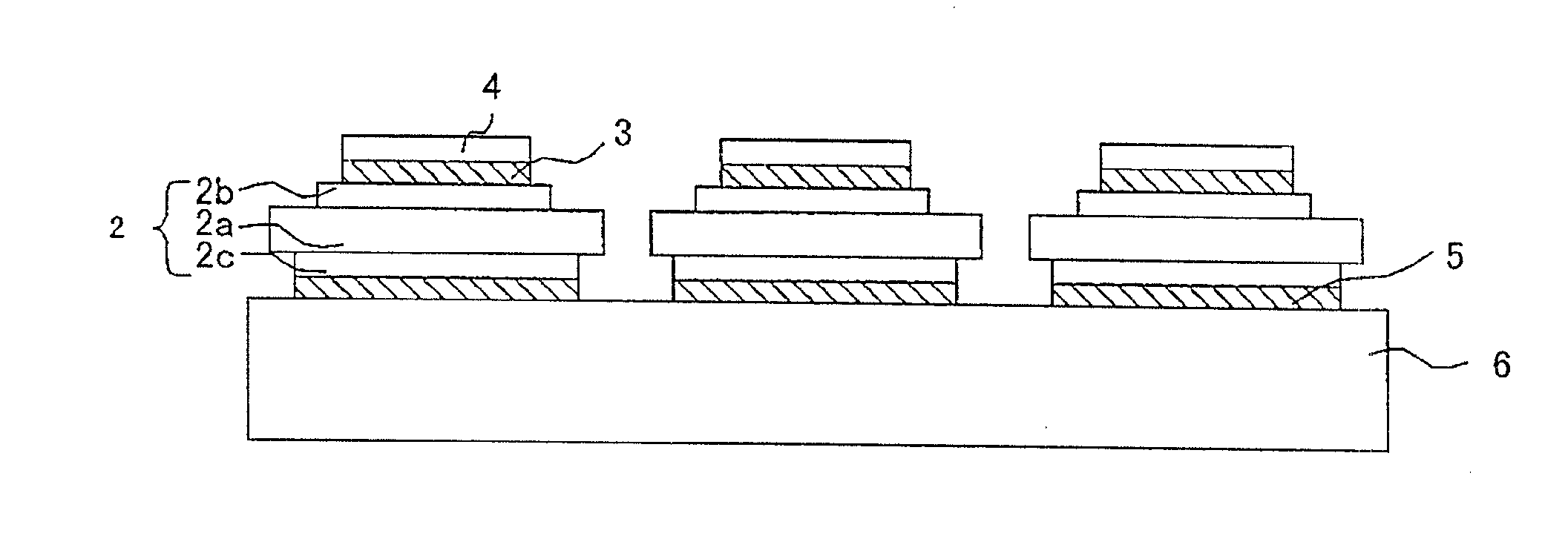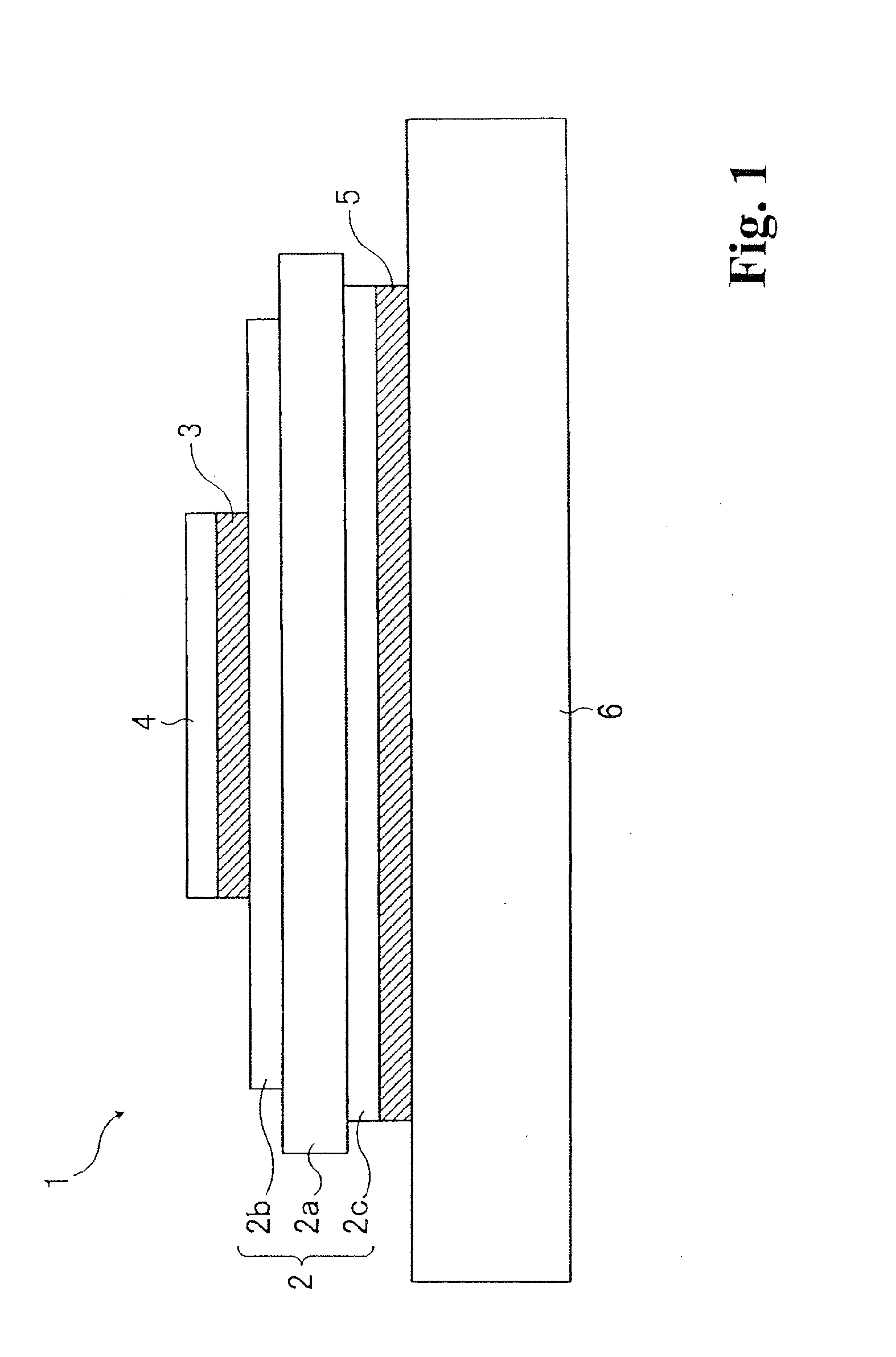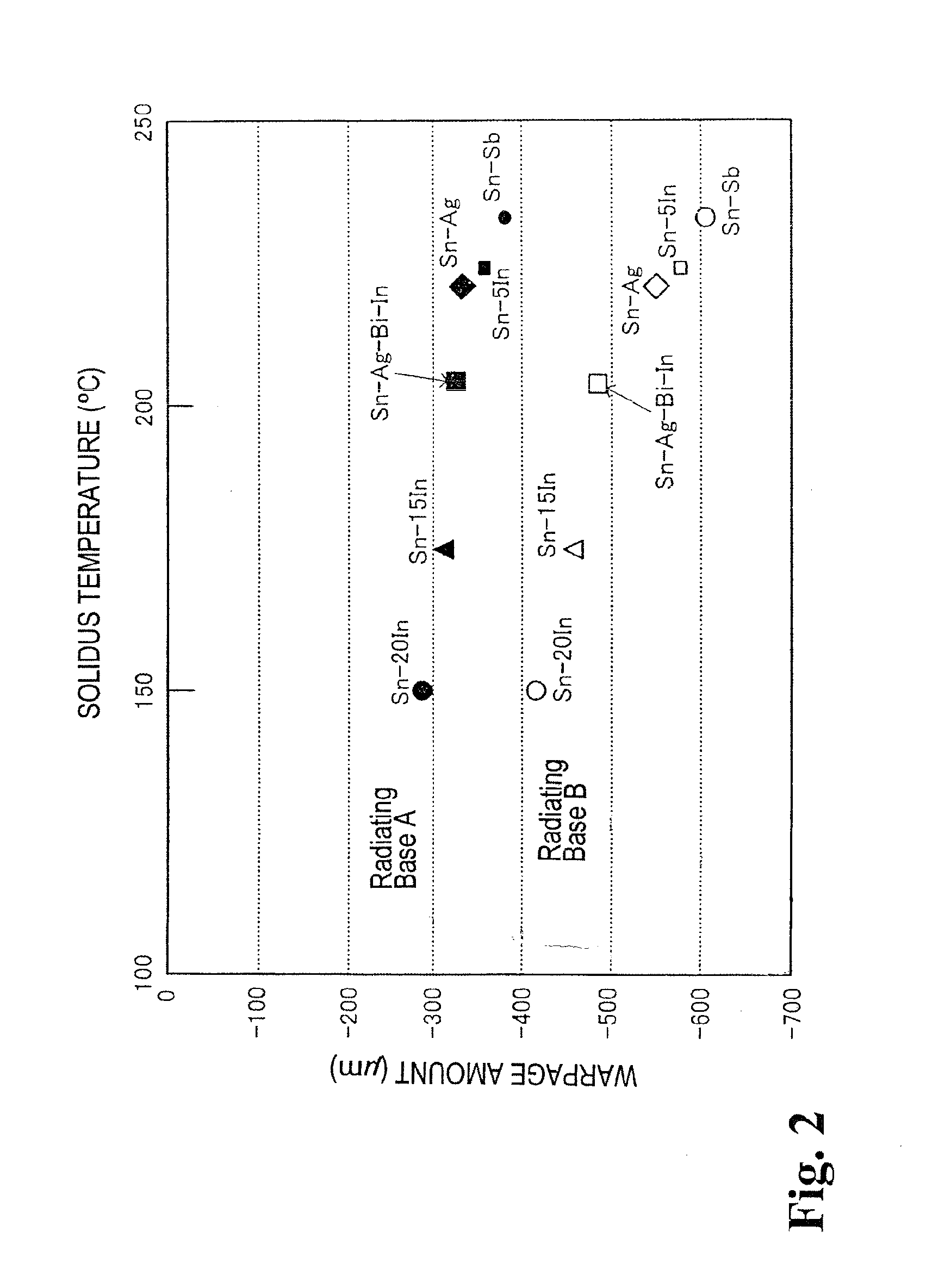Method for producing the same
a semiconductor chip and semiconductor technology, applied in the direction of special outerwear, protective clothing, garment special features, etc., can solve the problems of environmental contamination, poor thermal conductivity of materials, and deterioration of power semiconductor modules b>100/b>, so as to prevent environmental contamination, reduce contact thermal resistance, and reduce heat generated in semiconductor chips.
- Summary
- Abstract
- Description
- Claims
- Application Information
AI Technical Summary
Benefits of technology
Problems solved by technology
Method used
Image
Examples
Embodiment Construction
[0041]An embodiment of a power semiconductor module according to the present invention is described in detail below with reference to the drawings.
[0042]FIG. 1 is a schematic cross-sectional view showing a principal part of a power semiconductor module.
[0043]In the power semiconductor module 1 shown in FIG. 1, a semiconductor chip 4 is connected by a solder layer 3 onto an insulating substrate 2, which has conductor layers 2b and 2c on the both surfaces of a ceramic board 2a. One surface of the insulating substrate 2 is connected with the semiconductor chip 4 in this manner, and the opposite surface is connected by a solder layer 5 to a radiating base 6.
[0044]For example, the ceramic board 2a for the insulating substrate 2 may be a board mainly composed of alumina (Al2O3) having an appropriate thickness. Further, the conductor layers 2b and 2c may comprise copper foils with appropriate thicknesses.
[0045]For example, the solder layer 3 for connecting the insulating substrate 2 and th...
PUM
| Property | Measurement | Unit |
|---|---|---|
| melting point | aaaaa | aaaaa |
| area | aaaaa | aaaaa |
| thickness | aaaaa | aaaaa |
Abstract
Description
Claims
Application Information
 Login to View More
Login to View More - R&D
- Intellectual Property
- Life Sciences
- Materials
- Tech Scout
- Unparalleled Data Quality
- Higher Quality Content
- 60% Fewer Hallucinations
Browse by: Latest US Patents, China's latest patents, Technical Efficacy Thesaurus, Application Domain, Technology Topic, Popular Technical Reports.
© 2025 PatSnap. All rights reserved.Legal|Privacy policy|Modern Slavery Act Transparency Statement|Sitemap|About US| Contact US: help@patsnap.com



